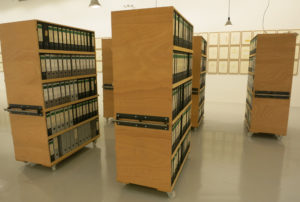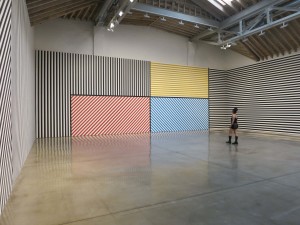Inspired by 17th century German scholar Athanasius Kircher’s cat organ, which elicited sounds made by cats, British artist Oliver Beer created ‘Cat Orchestra,’ a musical instrument crafted from 37 found objects in the form of hollow cat vessels. Now on view at Almine Rech Gallery’s Tribeca space, the piece’s sound is activated by a keyboard that turns on microphones in each vessel to produce resonances that together form an ethereal musical performance. Motivated to find music where it’s least expected, Beer awakens viewers to possibilities everywhere. (On view through April 27th).




